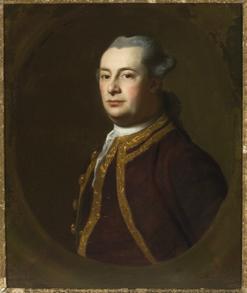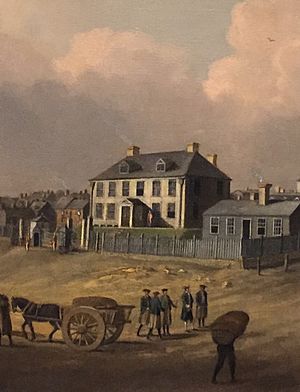Michael Francklin facts for kids

Michael Francklin (born December 6, 1733 – died November 8, 1782) was an important leader in Nova Scotia's early history. He served as the Lieutenant Governor of Nova Scotia from 1766 to 1772. He is buried in the crypt (an underground room) of St. Paul's Church in Halifax.
Contents
Growing Up and Moving to Nova Scotia
Michael Francklin was born in a town called Poole in England. In 1752, when he was about 19 years old, he moved across the ocean to Halifax, Nova Scotia. There, he started working as a trader and merchant, which means he bought and sold goods. He first worked with another merchant named Joshua Maugher.
Captured by the Mi'kmaq
During a time known as Father Le Loutre's War, Michael Francklin was captured by a Mi'kmaw group in 1754. He was held captive for three months. During this time, he learned to speak the Mi'kmaw language. This experience helped him to understand and respect the Mi'kmaw culture.
Michael Francklin's Political Career


Michael Francklin began his political career by representing different areas in the Nova Scotia House of Assembly. He represented Lunenburg County from 1759 to 1760 and Halifax County from 1761 to 1762.
On February 7, 1762, Francklin married Susannah Boutineau. A few months later, in May of that year, he was chosen to be part of the Nova Scotia Council. This was a group of important advisors to the governor.
In the early 1770s, Francklin helped bring many people from Yorkshire in England to settle in Nova Scotia. This event is known as the Yorkshire Emigration. He also played a very important role in helping the Acadians return to Nova Scotia after they had been forced to leave during the Expulsion of the Acadians. Francklin promised them that they could practice their Catholic faith, gave them land, and assured them they would not be expelled again.
In 1779, he helped create the Shubenacadie reserve, which was a special area of land set aside for the Mi'kmaq people.
His Death
Michael Francklin passed away at his home in Halifax in 1782. Many Mi'kmaq people attended his funeral at St. Paul's Church in Halifax, showing the respect they had for him.
Legacy of Michael Francklin
- A place called Fort Franklin in Tatamagouche, Nova Scotia, built in 1768, was named after him.
- The Mi'kmaq reserve known as Franklin Manor 22 in Nova Scotia is also named in his honor.
Images for kids
-
Susannah (Boutineau) Franklin (1762), Michael Franklin's wife, painted by John Singleton Copley.
See also



